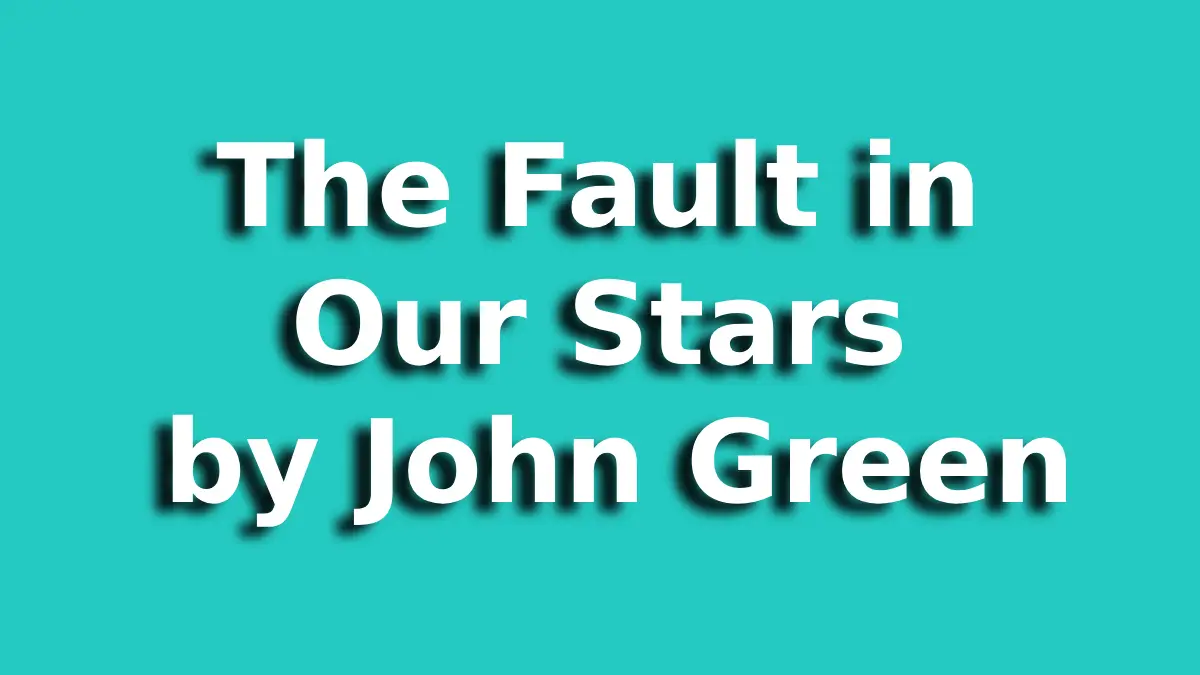The Fault in Our Stars by John Green is a poignant novel that delves into the lives of two teenagers, Hazel Grace Lancaster and Augustus Waters, as they navigate the complexities of life, love, and illness. Set against the backdrop of Indianapolis and Amsterdam, the novel takes readers on an emotional journey filled with heartbreak and hope.
At its core, “The Fault in Our Stars” explores themes of love and loss, showcasing the transformative power of relationships even in the face of adversity. Through the characters of Hazel and Augustus, the novel delves into the human condition, examining the ways in which individuals grapple with mortality and existential questions.
Character Analysis – The Fault in Our Stars by John Green
Hazel Grace Lancaster is a sixteen-year-old girl living with cancer, whose life is forever changed when she meets Augustus Waters at a cancer support group. Augustus, a charming and charismatic teenager in remission, brings light into Hazel’s world with his wit and optimism. Together, they embark on a journey of self-discovery and love, defying the odds stacked against them.
Setting and Atmosphere – The Fault in Our Stars by John Green
The novel is set in Indianapolis, where Hazel and Augustus first meet, and later in Amsterdam, where they travel to fulfill Hazel’s wish of meeting her favorite author. The support group meetings provide a poignant backdrop for the characters’ interactions, highlighting the shared experiences of those living with illness.
Literary Analysis – The Fault in Our Stars by John Green
John Green employs various literary devices to enrich the narrative of “The Fault in Our Stars.” Symbolism, such as the metaphor of the “faulty stars,” underscores the novel’s exploration of fate and destiny. Foreshadowing is intricately woven throughout the story, adding depth to the plot and character development. The first-person narration style allows readers to intimately connect with Hazel’s inner thoughts and emotions.
Impact and Reception – The Fault in Our Stars by John Green
“The Fault in Our Stars” received widespread critical acclaim upon its release, with praise for its heartfelt storytelling and authentic portrayal of teenage life. The novel resonated with readers of all ages, becoming a bestseller and garnering numerous awards. Its commercial success further solidified its place as a modern classic in young adult literature.
Controversies and Criticisms – The Fault in Our Stars by John Green
Despite its acclaim, “The Fault in Our Stars” has faced criticisms regarding its portrayal of illness and disability. Some have raised ethical concerns about romanticizing terminal illness, while others argue that the novel perpetuates harmful stereotypes about people living with disabilities.
Adaptations – The Fault in Our Stars by John Green
In 2014, “The Fault in Our Stars” was adapted into a successful film starring Shailene Woodley and Ansel Elgort as Hazel and Augustus, respectively. The film’s release further propelled the novel into the cultural zeitgeist, inspiring fan communities and fostering discussions about love, loss, and resilience.
Conclusion – The Fault in Our Stars by John Green
“The Fault in Our Stars” stands as a timeless tale of love and resilience in the face of adversity. John Green’s masterful storytelling captures the essence of human experience, inviting readers to reflect on life’s fleeting moments and the profound connections that define us. Through Hazel and Augustus’s journey, we are reminded of the beauty and fragility of existence, and the enduring power of love to transcend even the darkest of circumstances.
FAQs
Is “The Fault in Our Stars” based on a true story?
While the novel is a work of fiction, John Green drew inspiration from his experiences working as a student chaplain at a children’s hospital, where he met children battling cancer.
What age group is “The Fault in Our Stars” suitable for?
The novel is categorized as young adult fiction and is suitable for readers aged thirteen and above. However, its themes of illness and loss may be more suitable for mature readers.
How did the author come up with the title “The Fault in Our Stars”?
The title is derived from a quote by Julius Caesar in William Shakespeare’s play “Julius Caesar.” It reflects the novel’s exploration of fate and the inherent flaws in the universe.
Are there any sequels or spin-offs to “The Fault in Our Stars”?
No, John Green has not written any sequels or spin-offs to “The Fault in Our Stars.” However, he has written other novels that explore similar themes of love, loss, and existentialism.
Has “The Fault in Our Stars” been translated into other languages?
Yes, the novel has been translated into numerous languages and has been embraced by readers around the world for its universal themes and compelling storytelling.








